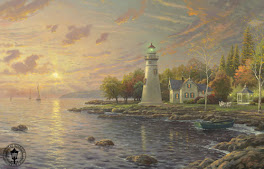 Muratbek Djoumaliev and Gulnara Kasmalieva's "Paradise" is a three-channel video installation with a circular field of bright green grass in front of it. The first video depicts a landscape, full of mud and without much vegetation. We watch as the camera passes over dead snakes and tire marks. The second video shows a man reaching for a bluish sky. Interestingly, on top of that television is a small plate of grass. It's as if the man is not just reaching for the sky; he's reaching for the life and paradise above the blue sky. Finally, the third video shows a camera passing through blades of green grass that resemble the grass in front of the screens.
Muratbek Djoumaliev and Gulnara Kasmalieva's "Paradise" is a three-channel video installation with a circular field of bright green grass in front of it. The first video depicts a landscape, full of mud and without much vegetation. We watch as the camera passes over dead snakes and tire marks. The second video shows a man reaching for a bluish sky. Interestingly, on top of that television is a small plate of grass. It's as if the man is not just reaching for the sky; he's reaching for the life and paradise above the blue sky. Finally, the third video shows a camera passing through blades of green grass that resemble the grass in front of the screens.Since Djoumaliev and Kasmalieva are from Kyrgyzstan, viewers interpret this piece of art as political commentary. It is the story of the collapse of the Soviet Union, which controlled Kyrgyzstan, and the resulting devastation of Kyrgyzstan's economy and society. So they reach for a better life, like the man reaching for the sky, and hope for the paradise in the last scene. The grass in front is a symbol of the fruits of their labor.
Though this is a valid interpretation of the art, I believe it has more wide-spread significance to people around the world. Snakes, such as those in the first streaming video, are often a sign of evil; they disgust us and we fear them. The first video is also filled with images of the woes of the world. In the second video, man desperately reaches for heaven, for an escape from evil and the world. The third shows his hope in something better. The grass in front represents that this paradise, man's hope, is a reality, not just something in the movies and our imaginations. It is a circular plot, which could represent the circle of life. Also significantly, our eyes are draw in by the grass before viewing the videos, then we read the videos left to right, and then our eyes stop on the grass again. It is as if we began in this paradise and then end up in it at the end of life. Thus "Paradise," in addition to commenting on Kyrgyzstan's political situation, relates to all people and their search for paradise.






